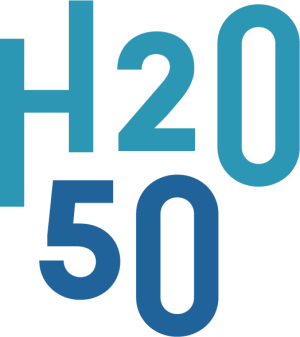When the soil is completely saturated with water, e.g. after prolonged rainfall, there is limited infiltration of rainwater, i.e. it does not penetrate further into the soil. The soil acts like a “paved surface” and the water will flow directly to the receiving watercourse. The water is only held up to a limited extent above ground level by the presence of vegetation or minute differences in topography.
Around the world, we find examples where there are different approaches to this overflowing water, with buffers which try to capture it. Rice fields are an obvious example. But also Machu Picchu, for example, where more than seven hundred terraces held the upper soil, enabling more forms of agriculture, and which were part of a vast water supply system that stored drinking water and prevented erosion of the steep slopes.
Imagine if we applied this philosophy in the Flemish Ardennes or other hilly areas. Building small dams or terraces on the plots on the hills. This could be done, for example, by planting hedges along the edges of plots, which automatically creates small terraces, a method that our ancestors often used in the area around the Flemish city of Voeren, for example. This creates an extra buffer so that the water from the plots is initially retained behind the dike or hedge, to the point where the buffer is full and the water flows slowly over the dike into the watercourse. This way, peak flows to the receiving watercourse can be reduced, thereby limiting possible downstream floods. Moreover, the loss of fertile farmland is also prevented. Another advantage is that it is not concrete infrastructure, but is adaptable to the ever more rapidly changing context in which our relationship with water has to take shape.
How much water can be held in our hilly region when you build small 50cm dams around meadows and fields? What cooperation between landowners, farmers, tenants, residents, etc., is necessary in this regard? How do we envisage this management? How do we enhance local knowledge (water citizenship) about water, so that farmers and landowners can manage the system themselves?
Download all catalysts
Disclaimer
The Flemish Environment Agency (VMM), De Vlaamse Waterweg, De Watergroep, Aquafin, the Flemish Department of Environment, Farys, Pidpa, water-link and VITO - Vlakwa have created the space for a group of fresh thinkers to develop a systemic view of water, and to challenge the water sector to shape a futureproof water system. The formulated ideas are not those of the initiators, nor do they represent their stands. However, they are considered valuable as an inspiration for the future of our water system.
This work is licensed under a Creative Commons Attribution 4.0 International License.
